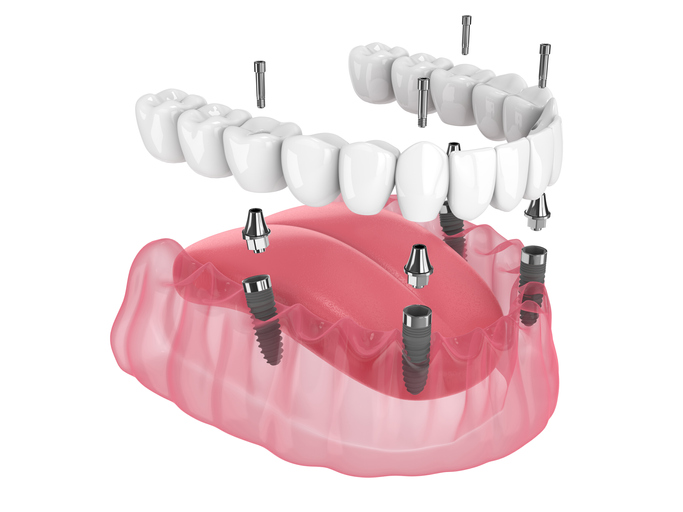Teeth in an hour? It’s really possible!

- After the extraction of teeth, a temporary denture is made.
- A computerized scan of your mouth, gums, and jawbone is done, allowing Dr. Scharf to complete the procedure virtually.
- A bridge of natural-looking teeth is created, and the computer scans are used to make a guide for the real procedure.
- On the day of your appointment, all dental implants are placed without opening the gum tissue, following the guide.
- The bridge is placed, and the patient can go home. It only takes about an hour!
Traditional implant therapy involves reflecting the gum tissue (drawing it back from the gum line), placing dental implants, and waiting 3–6 months for healing. Then the new teeth are made and attached to the implants. Teeth-in-an-Hour™ is a revolutionary technology that allows for the teeth to be made even before the surgery is done.
How Teeth-In-An-Hour Is Done

Computerized treatment planning and 3-D CAD-CAM design make this possible. A three-dimensional dentascan is made of the patient’s jaw as well as his or her existing denture. This information is fed into a computer, and the surgery is done virtually on the computer so that CAD-CAM technology can be used to make a model of what the patient’s jaw and implant position will be after the implants are placed. This information is then transferred to the dental laboratory, where the bridge is created.
On the surgery date, a CAD-CAM guide is made that is placed in the patient’s mouth, guiding the placement of the implants according to the positions determined during the “virtual surgery.” Because Dr. Scharf has done the surgery “virtually” on the computer, the implants can be placed without opening the gum tissue. Once the implants are placed, the prefabricated bridge is attached. The procedure only takes about an hour and involves no flaps or stitching!
Advantages and Drawbacks of Teeth-In-An-Hour
The advantages of “Teeth-in-an-Hour™” are that it is flapless, fast, and accurate. There is minimal swelling, and the procedure is virtually painless. The only drawback is that the patient must have had his or her extractions done and be in a denture before the surgery is done. The patient’s denture is the template for the final restoration. Prospective patients must have enough bone to support the restoration, and they must be able to open their mouth wide enough to accommodate the instrumentation.
Dr. Scharf is experienced in the Teeth-in-an-Hour™ procedure and can help you decide if this method of restoration is right for you.
